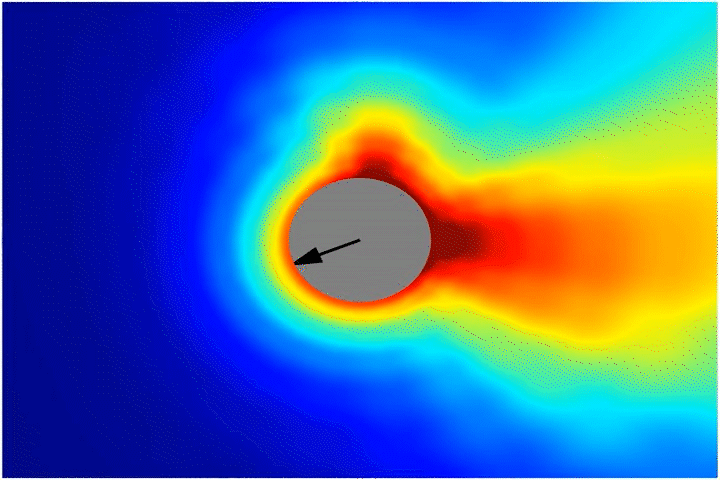Tuning chaotic movement
Lauren Smith
May 18, 2023

Source: R. Kailasham
Chaotic dynamics of an autophoretic (active) disk moving in a quiescent fluid
Non-living items that move without any apparent external energy input continue to fascinate scientists. For years, researchers have been working to understand these self-propelled, or active, entities.
At Carnegie Mellon University, researchers have recently leveraged ideas from the turbulence literature to better understand active matter. R. Kailasham and Aditya Khair have discovered a new way to tame the chaotic movement of active droplets.
"We know that the active droplet alone in a quiescent fluid, when there is no external flow, moves around in a chaotic manner," says Kailasham, a postdoctoral fellow in the Department of Chemical Engineering.
"There's a spontaneous motion that's deriving from the energy of solubilization," says Khair, a professor of chemical engineering. When solubilization happens at a slow enough rate, the droplet eventually disappears. Above a critical solubilization rate, the droplet undergoes steady rectilinear self-propulsion, followed by a transition to periodic and ultimately chaotic motion at large enough values of the solubilization rate.
Kailasham and Khair asked if this behavior would change in a flow field. In the journal Physical Review E, they describe the interplay between the intrinsic activity of the active droplet and the externally enforced flow. They specifically looked at shear flow, in which a lower layer of the fluid stays fixed and an upper layer moves.
Shear flow is often used in a rheometer to measure viscosity. One challenge of active fluids is that their viscosity is time-dependent. It changes depending on when it is measured. Because there is no steady state, active fluids can't be predictably processed.
If one were to scale this up, characterizing the viscosity is not a straightforward design problem.
R. Kailasham, Postdoctoral Fellow, Chemical Engineering
By mathematically modeling experimental systems, Kailasham and Khair predicted the behavior of an active droplet and showed the potential to make active materials reconfigurable or adaptable in response to external stimuli.
They found that an active droplet moves chaotically at moderate values of the applied shear rate. The intrinsic active dynamics win out. As the applied shear rate increases, the chaotic behavior is quenched, ultimately reaching steady rheology. "This is a way in which you can tune the chaotic rheology of an active matter suspension," says Kailasham.
Thus far, Kailasham and Khair have looked at behavior on the single drop scale. Next, they want to understand the collective dynamics of active droplets at the emulsion scale.
When making an emulsion of active droplets in industrial processes, the droplets go through several pieces of equipment, experiencing various flow fields along the way. Knowing how the active droplets will respond is important for processing.
The research published in the journal Physical Review E was funded locally, by the Charles E. Kaufman Foundation of the Pittsburgh Foundation.
For media inquiries, please contact Lauren Smith at lsmith2@andrew.cmu.edu.
